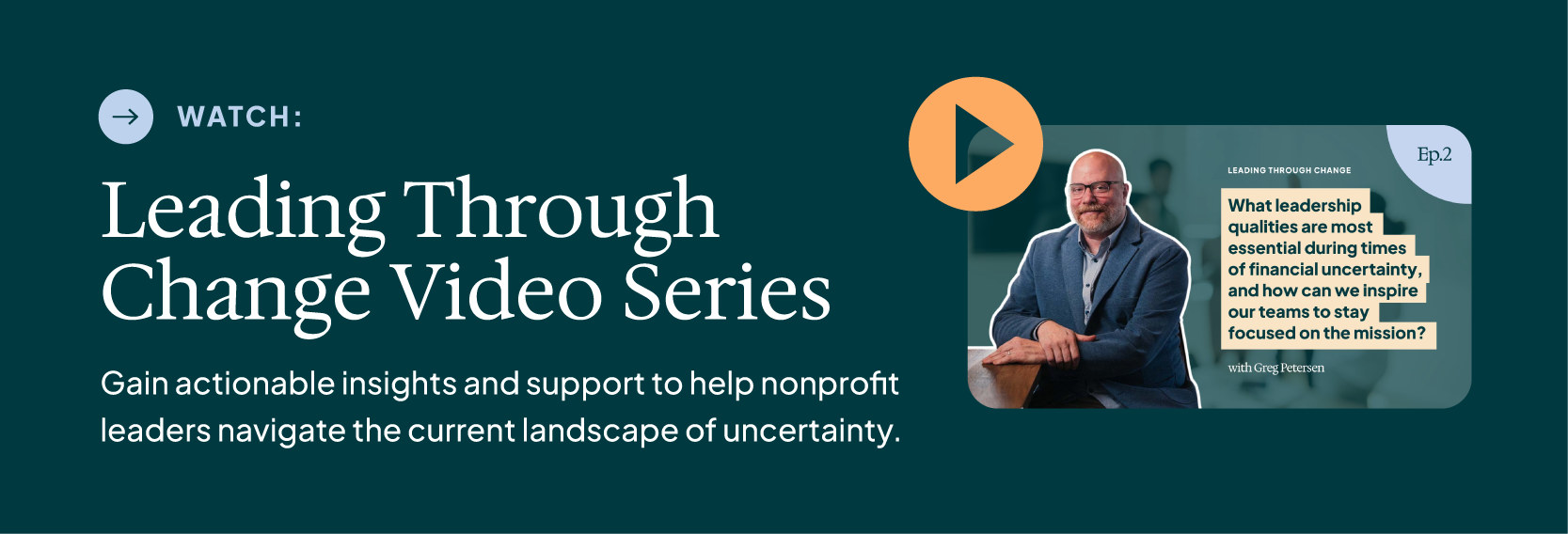Connection as a Leadership Strategy During Uncertain Times
In times of uncertainty, nonprofit leaders are often expected to be both steady and visionary—to hold the line while also pointing the way forward. But what happens when the ground beneath us keeps shifting?
From government shutdowns to funding instability to the emotional toll of sustained crisis, the nonprofit sector is navigating a prolonged period of disruption. And while strategic plans and financial forecasts are essential, they’re not enough. What’s needed now—perhaps more than ever—is connection.
The Human Cost of Uncertainty
It’s already hard to run a nonprofit in the best of times. But when you add layers of unpredictability—economic, political, environmental—the pressure intensifies. And that pressure doesn’t just land on balance sheets or dashboards. It lands on people.
Staff feel it in their workloads, in their inboxes, in their bodies. Leaders feel it in the weight of responsibility, the loneliness of decision-making, and the emotional labor of holding space for others while trying to stay grounded themselves.
Uncertainty isn’t just an operational challenge. It’s a human one.
Emotional Intelligence as Strategy
In this environment, emotional intelligence isn’t a soft skill—it’s a strategic one. Leaders who can read the emotional temperature of their teams, who can name what’s happening in the room, who can create space for people to be human—those are the leaders who build resilient organizations.
Emotional intelligence is not about having all the answers. It’s about being present. It’s about listening. It’s about knowing when to pause and when to push. And it’s about recognizing that how we show up matters just as much as what we do.
“Uncertainty isn’t just an operational challenge. It’s a human one.”
Connection Isn’t a Luxury—It’s a Leadership Discipline
During the pandemic, many leaders learned the hard way that failing to connect with their teams had real consequences. When connection was absent, trust eroded. Teams disengaged. Burnout accelerated. And in some cases, people quietly left—emotionally or physically—because they didn’t feel seen or supported.
But it wasn’t just leaders who learned. Staff across the sector quickly came to understand whether their organizations had their backs—or didn’t. In moments of crisis, the presence or absence of care became unmistakably clear. And those impressions have had lasting effects on morale, retention, and organizational culture.
Connection, then, isn’t a soft skill or a nice-to-have. It’s a leadership discipline. It requires time, presence, and emotional awareness. It means noticing when someone’s off, making space for what they’re carrying, and offering support without needing to fix everything. It’s about creating a culture where people feel safe to say, “I’m not okay,” and know they won’t be penalized for it.
In times of uncertainty, connection is what keeps people tethered—to each other, to the mission, and to hope.
Letting Go of the Balance Myth
There’s a long-standing myth in the nonprofit sector about work-life balance—as if the personal and professional can be neatly divided. But the truth is, they’re deeply intertwined. We bring our whole selves to this work, whether we mean to or not.
Our leadership styles are shaped by our lived experiences. Our communication patterns are rooted in the families and communities we come from. And our emotional states—regulated or not—impact how we lead, how we collaborate, and how we show up.
The goal isn’t perfect balance. It’s awareness. It’s knowing when you’re off-center and having the tools—and the support—to recalibrate.
A Call to Lead Differently
This moment calls for a different kind of leadership. One that values presence over performance. One that prioritizes people over pace. One that understands that connection isn’t a detour from the work—it is the work.
Because in the end, strategy without connection is just a plan. But strategy with connection? That’s how we build something that lasts.
Together, we are stronger.
If you need support in navigating uncertainty or balancing your mission and business strategies, we’re here to help.
Mission + Strategy is an invested thought partner to your nonprofit organization. Through our Strategic Advising, Mergers & Partnerships, and Shared Back Office service solutions, we help nonprofits achieve alignment between their mission and business strategies.











